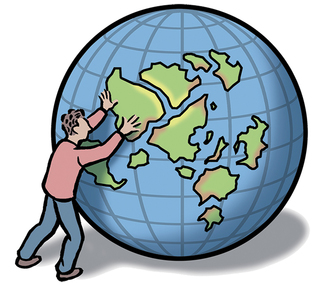 loading
loading
FindingsFellow travelersTracking the drift of continents.  Gregory NemecView full imageOn each of three separate occasions over the last two billion years, most of the Earth’s landmasses came together into one huge supercontinent. But the powerful tectonic forces that once brought California close to Australia and made Greenland part of North America also broke those three supercontinents—Nuna, Rodinia, and, most recently, Pangaea—into pieces again. Each was torn into large blocks, known as cratons, that were sent on long, solo journeys. David Evans ’92, professor of geology and geophysics, and colleagues have traced the blocks’ travels and discovered that when a supercontinent reformed, some cratons “reunited” with old partners. Evans and an international research group studied the paths of the Congo and Kalahari cratons—two landmasses that are currently neighbors, forming the central and southern parts of Africa—on their geological pas de deux. Scientists had already dated the rocks and found similarities in their ages and their patterns of rare-earth elements. Evans’s team, which specializes in paleomagnetism, established a reasonable match in the magnetic signatures that had been locked into the rocks at the time of their formation. (The study appeared in Geology.) The evidence suggested to Evans that the Congo and Kalahari cratons, before they were separated by an ancient ocean, had been part of an earlier supercontinent. He has proposed that the slow churning of the deep Earth could have a stability that restricts the travel of major landmasses to one hemisphere and brings them back together in the next cycle. These movements may point to potential sites of valuable rare-earth minerals. They also offer context for the Earth’s past, present, and future. “The planet continues to evolve,” says Evans. “This kind of research helps us speculate what the next supercontinent, which we call Amasia, will look like when it forms in about 150 million years.”
The comment period has expired.
|
|